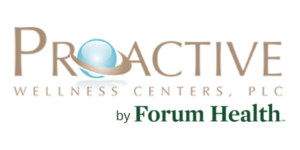
There's a common misconception that elderly men are the only ones with low testosterone or imbalanced hormones. According to the Cleveland Clinic, however, data shows that many men including men in their 40s and 50s suffer from low testosterone and sub-optimal testosterone around the world.. The truth is you don't have to be on your "last legs" to suffer from low testosterone.
In reality, as men get closer to 30, it's common for their testosterone levels to drop. When that happens, their lives and bodies change. Life may not seem as colorful or as exciting. Getting out of bed without aches and pains is rare. Finding the motivation to get up, go to work, and come home with a pep in your step is easier said than done. And for many men, the ultimate embarrassment occurs - they lose the ability to perform intimately in the bedroom.
If you're one of the millions of men with unexplained fatigue, weight gain especially abdominal fat, inability to put on muscle in the gym, decreased mental sharpness, increased anxiety or even erectile dysfunction, you may think that all hope is lost. But nothing could be further from the truth. Thanks to decades of trials and research, male health centers like Proactive Wellness are equipped with cutting-edge, FDA-approved medications and procedures to restore your hormones to optimal levels. It's called testosterone replacement therapy, or TRT for short, and it's giving men around the country renewed hope for a normal, meaningful life.
But to understand the incredible benefits of TRT in Lincolnia, VA, it's important to know about testosterone and how it works in your body.
About Understanding Testosterone
What comes to mind when you think about the word "testosterone"? For many people, testosterone is associated with men who are overtly aggressive or macho. And while testosterone has an effect on a male's vigor and motivation, it plays a much more important role than the average person thinks. The truth about testosterone is that it is a crucial hormone for male development that affects men from the time they go through puberty to the time they pass away.
Book Appointment (703) 822-5003
(703) 822-5003
Service Areas
As their primary androgen, testosterone helps men develop common male characteristics and is essential in the production of sperm. Controlled by your body's pituitary gland and hypothalamus, testosterone helps develop and maintain:
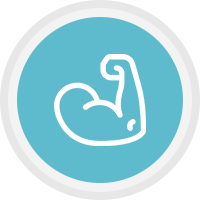
Muscle Mass

Facial and Body Hair

Sex Organs

Healthy Libido

Bone Density

Sexual Function

Healthy Red Blood Cell Levels
When low testosterone or hypogonadism occurs, however, males begin to notice concerning symptoms that often affect their everyday lives and romantic relationships.
Causes What Causes Low Testosterone?
Also called low T, lower testosterone levels are most often caused by aging. When testosterone levels deplete in this manner, it occurs naturally - just about every man will experience lower levels of testosterone as they get older. However, other causes of low T also exist, including drug abuse, obesity, prescribed meds, testicle injuries and even taking certain bodybuilding supplements.
Book Appointment (703) 822-5003
(703) 822-5003
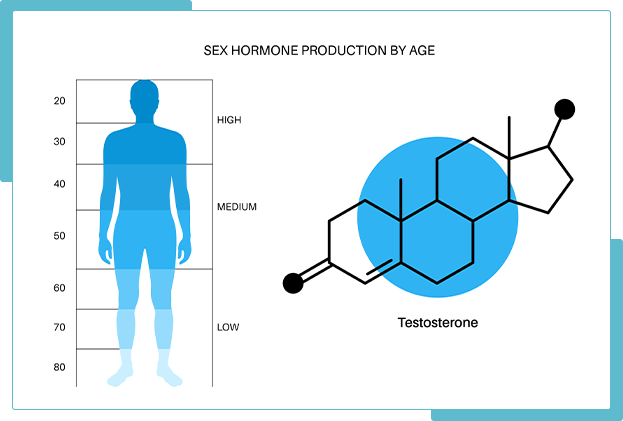
When men lose significant amounts of testosterone, it alters their body's levels of testosterone and estrogen. Lower T levels usually result in abdominal fat, which in turn causes estrogen synthetize levels to increase, creating even higher levels of estrogen in the body. With more estrogen and less testosterone, a number of concerning issues begin to surface. Some of the symptoms of low testosterone include:
- Erectile Dysfunction
- Lowered Libido
- Lowered Sperm Count
- More Body Fat
- Depression
- Anxiety
- Issues with Concentration
- Male Breast Development
- Less Muscle Mass
- Motivation Issues
If you're a man struggling with one or more of the symptoms above, it could be because you have low testosterone. But the only way you can find out for sure is to have your testosterone levels tested by a wellness center like Proactive Wellness. If your testosterone levels are low, TRT in Lincolnia, VA, may be the answer to your low-T problems.
Book Appointment (703) 822-5003
(703) 822-5003

Understanding The Symptoms of Low Testosterone
Are you starting to notice that you don't feel like "you" when you're at home or at work? Do you feel tired and lethargic all the time, even in your free time away from the office? Many men mistake these symptoms for being too sleepy or too busy. But the truth is, they're suffering from low testosterone. Since no two males will have the same symptoms of low T, it's prudent to recognize and understand some of the most common signs:

Erectile Dysfunction
If there were two words that all men wish to avoid, it's these two. Being unable to perform in the most intimate moments isn't just embarrassing - it can affect long-term relationships and mental health. It's a difficult topic to talk about. But it doesn't have to be. Our experts are ready to help you re-light that special spark.
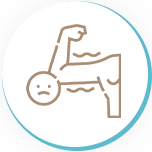
Low Libido
When you have low testosterone, sometimes the thought of having sex just isn't appealing. If you're one of the many men in the U.S. who lacks sex drive, it might not be you. I could be low testosterone. Don't settle for a mediocre sex drive - reclaim your vigor at Proactive Wellness Centers.

Lack of Sleep
Do you work hard every day and come home exhausted, only to find that you toss and turn all night long? Whether you have undiagnosed insomnia or another sleep disorder, it could be linked to low T.
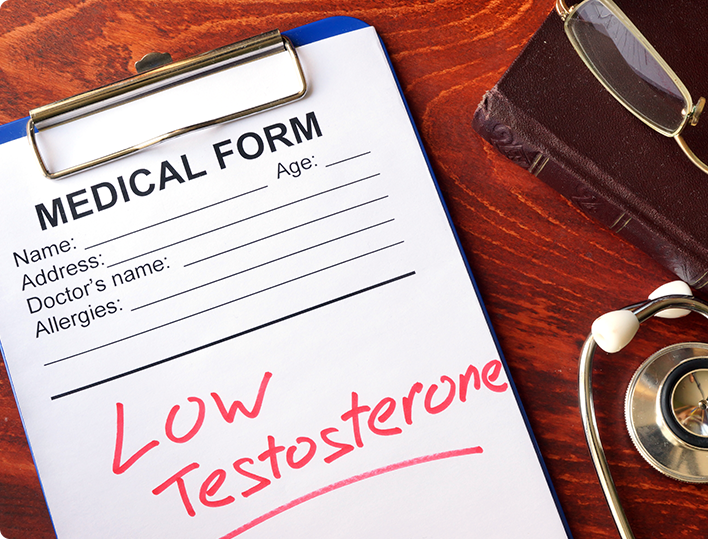


Less Strength and Muscle Mass
When testosterone levels deplete as we age, men lose their ability to lift heavy items, even with weightlifting routines in the gym. If you're making a concerted effort to maintain your muscle mass and strength but aren't making gains, it could be due to low T.
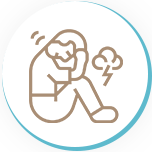
Depression
Your brain is home to many testosterone receptors, but when your body has low T, it can affect your mood. With time, poor spirits can lead to serious psychological issues, like depression. However, studies show that TRT in Lincolnia, VA, can rebalance your hormones, which can help relieve depression and improve your mood.
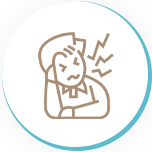
Lack of Concentration
Do you find it hard to complete normal tasks when you're at work? Does it seem like your memory is fading? Does your spouse or significant other complain that you're not paying attention to them? The effects of low testosterone don't just affect your body - they can affect your mind and memory, too. When your testosterone levels are within normal range, brain fog and other concentration issues have been shown to go away.

What are the Risks of Living with Low Testosterone?
At Proactive Wellness Centers, we understand what men must go through daily when they have low testosterone. They suffer from fatigue and lack motivation and often don't feel like their usual selves. But as bad as those symptoms sound, living with low T can have more severe health risks that that put vital organs at risk. Some of the most concerning health risks you should be aware of include the following:
Book Appointment (703) 822-5003
(703) 822-5003
Some of the most concerning health risks you should be aware of include the following:


Heart Health
If you've been told by a doctor that you have high blood pressure, you're probably wondering what it stems from. Is it aging? Is it hereditary? Is it something else? According to academic research, men with low T have a higher chance of developing cardiovascular illnesses. When testosterone levels are low, red blood cell reproduction suffers. When that happens, plaque buildup in your arteries may be accelerated. With time, plaque building can lead to very serious problems like strokes and heart attacks.

Anemia
When you have anemia, your body has a lack of or dysfunctional red blood cells, meaning your organs have less oxygen with which to function. Because testosterone has a role in healthy red blood cell production, it makes sense that men with low t have a higher risk of anemia. In fact, a 2009 study found that older men with low T are 5x more likely to be anemic than men with healthy levels of testosterone. While TRT in Lincolnia, VA, isn't a cure for anemia, it will help produce more red blood cells in your body, which can prevent anemia.

Diabetes
If you have been diagnosed with pre-diabetes or diabetes, and you're trying to figure out why, it may be linked to your T levels. That's because men with low testosterone have a greater chance of developing diabetes as they age. Similarly, men with diabetes are much more likely to have low testosterone, establishing a relationship between diabetes and testosterone. This relationship is further solidified by the fact that men with low T have a more challenging time resisting insulin. Though TRT won't cure diabetes, studies show that men with healthy testosterone levels also have healthier blood sugar levels and are often less obese.

Obesity
If you look in the mirror in the morning and can't stand how much body fat you've gained since getting older, you're not alone. Many aging men have problems with their waistlines. If you eat well and exercise regularly but still can't get rid of that unsightly stomach or body fat, the culprit may be low testosterone. Multiple studies have shown the link between obesity and low T. In fact, testosterone plays an important role in food metabolism by regulating insulin, glucose, and fat. Fortunately, when combined with diet and exercise, men who undergo TRT can often lose weight and enjoy improved blood glucose and low-density cholesterol levels.
Enjoy Life to the Fullest with TRT in Lincolnia, VA

Testosterone replacement therapy does precisely what it sounds like: It is a science-backed therapy that replaces low testosterone levels in men. The ultimate goal of TRT is to improve your life and well-being by balancing your hormones. Also referred to as androgen replacement therapy, TRT helps many men deal with and overcome the debilitating side effects of low T.
Originally developed by scientists in the 1930s, TRT has grown substantially in popularity over the years. Today, it is one of the most common and promising treatments for males with low testosterone.
How Does TRT Work?
Without getting too scientific, TRT works by providing your body with the testosterone it needs to function properly. Without healthy levels of testosterone, the male body can't maintain the natural processes it needs for overall health. In fact, men with low testosterone levels are more prone to serious health problems like type-2 diabetes and even heart disease. Until their T levels are restored to normal, most men suffer until they find a solution.
That's where TRT comes into play. With balanced hormones, your body can finally begin to heal, causing most symptoms of low t to diminish greatly.
The Proactive Wellness Approach to TRT in Lincolnia, VA
At Proactive Wellness Centers, our team utilizes a three-pronged approach to healing and treatment:
Patient Education. We equip you with the knowledge needed to take charge of your health and achieve optimal well-being in your life.
Prevention. We focus on preventing diseases by providing you with a thorough evaluation, which includes comprehensive diagnostics and the information you provide on your health history form.
Rejuvenation. Lastly, we work closely with you to implement a rejuvenation program consisting of several science-based treatments that aim to promote tissue regeneration, reduce cellular degeneration, foster healing, and slow your aging process.
Because no two patients ever have the exact same needs and treatment, your journey to journey to optimal health will be unique and tailored to your body.
However, to give you a brief snapshot of the average patient's TRT timeline may look like this:
Getting Started:
You contact our TRT clinic in Virginia. Based on your schedule, we'll arrange for a time for you to come in for your initial assessment.
Diagnostics and Evaluation:
One of our diagnostic experts will complete comprehensive testing to discover your testosterone and related hormone levels and your best treatment options.
Review Testing:
We'll sit with you one-on-one to discuss the results of your lab tests. During this session, a medical practitioner will also answer any questions you have about low T and testosterone replacement therapy.
Begin Your Custom TRT Regimen:
Based on your lifestyle, goals, and test results, we'll craft a custom TRT plan exclusively for you.
Success Coaching:
When you undergo TRT at Proactive Wellness Centers, you're never alone. We'll be by your side the entire way to ensure your treatment is going well and you're hitting your benchmarks. We'll keep track of your progress, and if there are areas that need improvement, we'll work with you to accomplish the goals you haven't achieved yet. Because, at the end of the day, a little bit of encouragement can go a long way.
Enjoy the Results:
This is the best part! With time and care, you'll begin to notice the effects of TRT and will be well on your way to enjoying balanced hormones.

Trust The Proactive Wellness Difference
Did you know that 13 million males suffer from low T, but a whopping 90% go untreated by doctors? The reason is that conventional doctors believe that unless your Testosterone level is below the low lab reference range level, that your are "OK". At Proactive Wellness, we help you to optimize and be the best you can be, not just OK. Why be OK, when with the help of the right Testosterone dose, you can feel better, be healthier, stronger and more vibrant. If you believe that your testosterone levels are at unhealthy levels, it's time to contact Proactive Wellness Centers for testing. Living with low testosterone is a risk, but with personalized TRT in Lincolnia, VA, you can minimize the harmful effects on your body.
Unlike other TRT clinics, we utilize a more complete and personalized approach to Testosterone Replacement Therapy. Our approach considers the role of DHEA, another very important hormone that needs to be balanced. And we look at Estradiol conversion, the unwanted effect where some men convert too much Testosterone to estradiol. In this case, these men (about 10%) need a medication to block this conversion, called an aromatase inhibitor. But notice that I mentioned that only 10% of men need this, but at many men's clinics, all men automatically get an aromatase inhibitor whether they need it or not. This drives Estradiol too low, causing other issues. Yes, Men need Estradiol also, but they need it in the proper proportion. Bottom line, our personalized approach ensures that you get exactly what you need, no more and no less.
Further, Proactive Wellness offers the widest range of Testosterone Replacement options so that men can choose the best for their particular lifestyle. Choose from pellets that are inserted just under the skin and last for 4-5 months, or the most popular option, Test Cypionate injections that are typically done weekly, or specialized transdermal cream or even a specialized intranasal application that mimics natural testosterone levels. Any of these methods are available at Proactive Wellness Centers so that you can get the option that is right for you.
Is testosterone replacement therapy enough? Maybe, it all depends on your goals and your lab results. Many men are also deficient in growth hormone (GH) and this hormone can also contribute to you not being your best. If this one is low, Proactive Wellness offers a range of Growth Hormone Releasing Hormone (GHRH) peptides to increase your GH levels. Many men combine this with TRT to feel their absolute best.
If you're ready to reclaim your confidence and return to loving life on your own terms, our physicians and medical team are ready to help. Don't be one of those men who constantly complain about their health but don't do anything about it. Contact Proactive Wellness Centers today to make a difference in your life!
 (703) 822-5003
(703) 822-5003
Book an Appointment
Latest News in Lincolnia, VA
Investigation finds 'systemic gaps' in FCPS hiring after counselor convicted of sex crimes allowed to continue working
wusa9.comhttps://www.wusa9.com/article/news/local/fairfax/investigation-finds-systemic-gaps-fcps-hiring-after-convicted-counselor-allowed-continue-working/65-629a395b-6cb6-4b7c-afdd-40aa7a6f4d1b
Darren Thornton worked as a middle school counselor in Fairfax County despite a conviction for sex crimes against children.LINCOLNIA, Va. — Tuesday, former Fairfax County Public Schools counselor Darren Thornton was in a Chesterfield County, Virginia courtroom on charges of soliciting prostitution, the allegations that ...
Darren Thornton worked as a middle school counselor in Fairfax County despite a conviction for sex crimes against children.
LINCOLNIA, Va. — Tuesday, former Fairfax County Public Schools counselor Darren Thornton was in a Chesterfield County, Virginia courtroom on charges of soliciting prostitution, the allegations that got him fired this past summer from his job at Glasgow Middle School.
By law he should have been fired nearly two years ago when he was first charged and eventually convicted of sex crimes against children.
For that, Thornton was placed on probation. He had already passed a background check to get hired with Fairfax County Public Schools and kept working despite his conviction.
"We need to understand what happened here and why it happened," said Kathleen Brown, a FCPS parent at a Tuesday night meeting at Glasgow Middle.
At the meeting, the FCPS superintendent Dr. Michelle Reid shared with parents the results of an independent investigation into Thornton's employment.
The report found the district was never notified of Thornton's original arrest or conviction.
And also found "several systemic gaps" in the FCPS hiring process "including on reference checks, verification of the appropriate license, and information sharing between jurisdictions" among other issues the superintendent says FCPS is addressing as quickly as possible.
"One of the things that we have to do first is name that we have a concern, acknowledge that, look into it, and then follow recommendations that we know to be best practice moving forward," Dr. Reid told WUSA9. "I don't believe it's going to happen again here in Fairfax County Public Schools. And, I believe our families can trust us."
"I really think Dr. Reid is on the right path here. But I think we have to persist," said Brown echoing the concerns of some other parents at the meeting.
"To blithely say, 'No, this is not happening, it's not going to happen again here,' is very naïve," said Brown. "We have got to realize we've got all sorts of concerns about our kids and I think they're valid concerns."
One change Dr. Reid said she wants is regular background checks of current staff, after they are hired. But, she says she needs the commonwealth's help to make that feasible by enrolling in a FBI program called Rap Back.
The superintendent also says she has already taken disciplinary action on school employees and more could be coming but she won't say who or what it was.
'There was a car in our front yard' | Homeowner calls for lower speed limit after a string of crashes on Lincolnia Road
Evan Koslofhttps://www.wusa9.com/article/news/local/virginia/there-was-a-car-in-our-front-yard-homeowner-calls-for-lower-speed-limit-after-a-string-of-crashes-on-lincolnia-road-alexandria-northern-virginia/65-c4d88f48-4c15-468a-8ab3-7b6b26af881d
Debi Gerald, who lives along Lincolnia Road, said that they've tracked 15 crashes on a small stretch of Lincolnia Road so far in 2023.More VideosALEXANDRIA, Va. — On her front lawn in the Alexandria area, Debi Gerald looked through a photo album. This album is not filled with childhood memories or family portraits. Every page is full of ...
Debi Gerald, who lives along Lincolnia Road, said that they've tracked 15 crashes on a small stretch of Lincolnia Road so far in 2023.
More Videos
ALEXANDRIA, Va. — On her front lawn in the Alexandria area, Debi Gerald looked through a photo album. This album is not filled with childhood memories or family portraits. Every page is full of crash photos.
"Our mailbox down at that point," she laughed, pointing at one of the pages.
Gerald lives in a home along Lincolnia Road, nestled in between Columbia Pike and Little River Turnpike. She said this stretch, which many drivers use as a cut-between, has become a hotspot for crashes.
“Cars have been running off the road for as long as I can remember,” she said.
Along with her mother, Gerald started tracking every crash in a spreadsheet last year. In 2022, the duo documented 27 crashes, and so far in 2023, they've counted 15.
With each incident, Gerald jots down the date in one cell and notes in the other, using sentences like "car into ditch" or 'two signs hit.' On June 24, 2023, she jotted down an especially dramatic note.
"Three car accident at Lincolnia Rd. and Sano St. One car ended up in our yard. That driver was taken to the hospital for pain due to airbag deployment."
Gerald said that this crash could have been a lot worse.
"We woke up to a loud noise," she said. "And there was a car in our front yard. That easily could have happened when my 84-year-old mother was out cutting the grass in the front yard.”
Gerald is uniquely suited for this project.
Her late-brother, Wes Gerald, was a fire dispatcher for Fairfax County, and had a passion for fire photography. When he passed away, Debi took up the camera, to honor his memory, as documented by WUSA9 in 2019.
"There's probably not a day that goes by when I don't think about my brother," she said in 2019. "But this does help. Knowing that it meant so much to him. Now it means this much for me as well."
Due to this background, Gerald is used to having the scanner blaring at all hours. When a crash happens nearby, she is able to respond quickly to snap a photo.
Gerald has brought this data to the Virginia Department of Transportation, urging them to lower the speed limit. However, VDOT has so far turned down this request, as explained in a statement to WUSA9:
"VDOT was contacted by Supervisor Gross’s office regarding an inquiry into changing the speed limit on Lincolnia Rd. A speed limit study was conducted for Lincolnia Rd. between Barnum Lane and Columbia Pike and based on the findings of the study, the recommendation was to maintain the speed limit of 35 mph."
"VDOT adheres to specific policies along with the Code of Virginia to ultimately determine if a speed limit study is required and a change is necessary. Not only is crash and speed data considered, by also such things as pedestrian activity, roadway context, and driveway density are included in the study. Once a speed study is completed, a decision can be made in coordination with the district traffic engineer, district traffic operations director, and finally the state traffic engineer to implement the change, if necessary."
Despite VDOT's response, Gerald said that she'd keep fighting for changes on Lincolnia Road.
"We are concerned about our neighbors," she said. "We’re concerned about the amount of damage done to cars.”
Neighborhood Spotlight: Parklawn
Annandale Todayhttps://annandaletoday.com/neighborhood-spotlight-parklawn/
Like so many other subdivisions in the Annandale/Mason area, Parklawn was built on farmland to meet the needs of population growth following World War II.The neighborhood, generally between Columbia Pike, Holmes Run Stream Valley, and Lincolnia Road, was built in 1955 on what had been the Clark family’s dairy farm.The Clark House was moved from its ...
Like so many other subdivisions in the Annandale/Mason area, Parklawn was built on farmland to meet the needs of population growth following World War II.
The neighborhood, generally between Columbia Pike, Holmes Run Stream Valley, and Lincolnia Road, was built in 1955 on what had been the Clark family’s dairy farm.
The Clark House was moved from its original location in the 1980s to make way for the development of the Bancroft Mews townhouses. It was restored and now sits on a hill overlooking Columbia Pike and the Barcroft Plaza shopping center. There’s another smaller house owned by the Clark family on Braddock Road in Parklawn.
The original community had 625 houses, says Richard Zambito, president of the Parklawn Civic Association, but has grown as about 10 smaller neighborhoods were annexed over the years.
Most of the houses are basic ramblers, although there are a few split levels. The original houses are either 1,200 square feet one-story homes built on a slab or two-story 2,400 square feet houses, Zambito says. Most have had additions built over the years, and some have been totally transformed.
Home prices vary widely, from the low-$400,000s to close to $700,000 depending on size and the extent of improvements.
Few houses are on the market, however. “No one builds one-story homes anymore, so these homes are popular and sell quickly,” says Zambito, noting they attract empty nesters, retirees, and young families who’ve been priced out of Arlington.
Nearly all the streets are named for national parks, such as Yellowstone, Everglades, Teton, and Bryce. There’s an Arcadia Road, which is probably a misspelling of Acadia, a park in Maine.
There are so many trees, “some streets really do feel like a park,” Zambito says. Parklawn is bordered by Holmes Run Valley Stream Park, which has a nature trail and a new pedestrian bridge.
Other assets, cited by Zambito, include the Parklawn Pool, Glasgow Park, the baseball fields at Parklawn Elementary School, the wide diversity in ages and cultures among the residents, and the many sidewalks. Other than Braddock Road, there aren’t any cut-through streets, making Parklawn “somewhat secluded and insulated from the chaos of Columbia Pike and Lincolnia Road,” he says.
“People know each other here. That’s one of the really nice things,” he says. “On some levels it’s like a big second family.”
At one time, the civic association and the Parklawn Recreation Association, which oversees the pool, had been combined but split up in the 1980s or 1990s, according to neighborhood lore, as residents sparred over the building of tennis courts. The civic association eventually dissolved, and the tennis courts, which had been poorly maintained, were demolished about five years ago.
Resident Mollie Loeffler revised the Parklawn Civic Association at about that time, with help from lots of volunteers, including Dave Galway. The group received several Fairfax County Neighborhood Enhancement Partnership Program grants for projects to clean up and improve Glasgow Park and add landscaping and signs at the neighborhood entrances.
The civic association also hosted several events to bring the community together, including the Spooky 5K, potluck dinners, National Night Out gatherings, and a house tour.
Parklawn is dealing with some of the same challenges facing other neighborhoods in Mason District, including an increase in rental properties, a decline in property maintenance, residents’ failure to pick up litter, and the difficulty getting people to volunteer for community projects.
A couple of recent land use issues have gotten the neighborhood’s attention in a big way, however. Plans in 2012 for a cell tower on property owned by the Parklawn Recreation Association sharply divided the community. Some residents argued that the pool needed the revenue from the cell tower while those opposed complained it would be an eyesore that would bring down property values.
The issue was finally resolved in May 2014, when a state appeals court affirmed a decision against the tower by the Fairfax County Board of Zoning Appeals. “People put that conflict behind them,” Zambito says, noting that pool membership is up and, barring any new problems, “the pool will survive.”
Last fall, many Parklawn residents strongly opposed the Commonwealth of Virginia’s plans for a Department of Motor Vehicles customer center in the Barcroft Shopping Center. Local members of the General Assembly ultimately persuaded the DMV not to relocate.
That was a great victory for the neighborhood, not only because the DMV would have created traffic and parking problems, but because it might have caused Harris Teeter to move away, Zambito says. Many residents see that store as not only a shopping destination, but a good place to meet your neighbors.
Parklawn Snapshot
Location: Mason District, east of Columbia Pike, with an Alexandria postal address.
Schools: Parklawn Elementary School, Glasgow Middle School, Stuart High School.
Recreation: Parklawn Pool, Glasgow Park, Holmes Run Stream Valley, Mason District Park.
Home prices: $430,000 and up.
They built the road they would be forced to walk: a brief history of Little River Turnpike
Annandale Todayhttps://annandaletoday.com/they-built-road-they-would-be-forced-to/
By James Albright, from the Living Life in 4D blogFrom my front porch, looking over my garden, I can see the two blocks to the intersection of my street with the Little River Turnpike here in Lincolnia. I typically walk there once a day or so on my way to the local coffee shop or to Green Spring Gardens, a stunning horticultural center that reminds me of why I live here in Fairfax County. All in all, it is an idyllic life – early 21st century troubles notwithstanding....
By James Albright, from the Living Life in 4D blog
From my front porch, looking over my garden, I can see the two blocks to the intersection of my street with the Little River Turnpike here in Lincolnia. I typically walk there once a day or so on my way to the local coffee shop or to Green Spring Gardens, a stunning horticultural center that reminds me of why I live here in Fairfax County. All in all, it is an idyllic life – early 21st century troubles notwithstanding.
Little River Turnpike carries its history in its name. It was the turnpike – the toll road – that led to the Little River, some 34 miles to the west. One of the first-ever roads constructed in this country, it stretched from Alexandria through farm and field countryside. Today it has many names along the way, but right here in Annandale, it is still called the Little River Turnpike.
Although its six-lanes are not often loved, its history is indelibly connected to the counties it passes through. But that history – of sleepy farmers on slow carts, bearing their produce to the wharves of Alexandria – is really just one side, one happy side, of the road’s past.
The rest of its history is something that I suspect few in my area know about. For the Little River Turnpike is a road built by enslaved Americans that served, eventually, as the path their children and their children’s children, would take when shackled at the feet, they were marched away from their homes to the Deep South.
When I look up the street to the Turnpike, I see only cars racing by on their way to Alexandria, about four miles to the east. Like so many roads, we don’t see really see it. We see cars, bicycles, stoplights, street signs, storefronts, but we don’t see what went into the making of the road – why it went here, who did the work, and what happened to them.
The Turnpike was an incredible challenge – the structure of the road itself was very modern, very expensive, and very arduous. Since this was early 19th century Virginia, the builders turned to the labor market they were comfortable exploiting: enslaved Americans who were to be rented under contract.
Twenty men were retained to do the work of the overseers over the next few years. The proceeds of the work did not go to those who did the actual work; no, that money went to those who enslaved them. Although we have never really listened to their voices, the workers clearly spoke – a number ran away from the job, a number large enough that they had to find another group to keep the work going.
In my mind’s eye, I can see the men clearing fences and trees out of the way, shoveling the soil to build the mounded center of the roadway and then sloping it away from the crown. Stones had to be lain just so, so water would drain; ditches would need to be dug to carry water away. The road had to be dry – or at least mostly dry – so that the mud that bedeviled so much cartage and horses in that day wouldn’t impede travel and justify the 10-cent tolls.
| A coffle of slaves being marched from Virginia west into Tennessee, c. 1850. [Abby Aldrich Rockefeller Folk Art Museum, Colonial Williamsburg Foundation] |
The climate in Virginia can be terribly hot or numbingly cold – there is no doubt in my mind that the overseers would not care too much about the comfort of their workers. The task at hand had to be completed.
It took eight years of hard work until December 1811 when the final pieces were put in place. From that point, the road became a major thoroughfare, one so popular that towns sprang up along its path and shaped the infrastructure that underpins Northern Virginia.
One can look at a map of the whole area and still trace the straight line that was the Little River Turnpike, now routes 236 and 50, from the city to the hills. The road became the backbone of transportation from the Piedmont and the Shenandoah Valley to the waterfront of Alexandria.
Because the road was so efficient a mover of produce and carts, it also served to move men, women, and children from what was called the Tidewater all the way to Louisiana and Mississippi.
Once the nation had restricted the “slave trade” – the seizure of humans from Ghana, Senegal, Biafra, Congo, Angola, and other places – and the nature of agriculture in the young country had shifted from tobacco in the mid-Atlantic to cotton in the Deep South, the demands of labor also shifted.
White landowners in Maryland, Virginia, and the Carolinas found a new way to profit – many had their enslaved workers sold to cotton slave camps in the south. Families were broken up, children separated from adults, communities shattered as merchants of the enslaved found what is now called the “domestic trade” to be a profitable exercise.
In Alexandria, prisons full of these men and women were used to house them while sales could take place. These prisons still stand along Duke Street in Alexandria. From these prisons, the enslaved were either sent by boat to New Orleans or shackled together in “coffles” and walked overland to Louisiana.
To describe the experience of the coffles would be impossible without falling prey to minimizing the horror. For our discussion, however, it is the passage itself that concerns. For those prisons sent the enslaved in coffles to trudge down Duke Street – the starting point of the Little River Turnpike. From the prisons, the coffled men and women would ascend towards Shuters Hill and the Turnpike. The last stop: New Orleans.
Bound together, moving slowly, the groups of enslaved would probably manage about 20 miles a day. If they left early in the morning, they would be reaching the outskirts of Green Springs Farm in Lincolnia (then Uniontown) probably mid-morning. Coming up the Little River Turnpike where it crests the hill after Turkeycock Run, they would walk along the field of the large farm, the promise of water from its fresh spring perhaps used to entice them to quicken their pace.
If one of those walking in shackles looked to the left, they would see fields of corn and maybe a small orchard, looking right at the place my house would be built in another hundred years. They might see other enslaved Americans working in those fields, fields that were now poor after long periods of cultivation, workers straining in the sun. They might have looked at each other – both enslaved in the only land they had known right there where Cherokee Avenue meets Little River Turnpike, where a dentist and a daycare center now watch the car dealer across the street. They might have wondered what would become of the other?
And like that, they would part, one to his plow the other to the stony path ahead of him. At some point in those years, the continuous passage of these thousands of enslaved men and women trafficked to the South, would get less attention. Maybe the workers in the fields wouldn’t even look up much anymore – just another group moving past, like so many before. Or maybe they would be glad that they were not being torn from their families, their children.
I think about this a lot as I walk along Little River Turnpike, nearly 200 years after that time. Only a little of that time remains – the beautiful house of Green Springs that was there before the Turnpike was built now hidden behind the car dealer, the streams that still flow to this day at the foot of the hill, the hills themselves that posed a serious challenge to the builders. Even those people who worked in the fields, they remain. For their descendants surely settled in this area after the Civil War was fought for them. Lincolnia, just down the way on Little River Turnpike, was primarily a Black American community, with a school, stores, churches, and cemetery.
The decimation of the American community brought on by the domestic trade of the enslaved remains a central character in the nature of our country. So, in a way, the story of the road that edges my neighborhood is both a story of the past and a story of the future.
Much of the factual basis for this post (but not the opinions) comes from an article from 2017 by Debbie Robison in local history blog, Northern Virginia Notes, an article by the renowned historian Edward Ball, “The Slavery Trail of Tears” in Smithsonian, and Edward Baptiste‘s The Half Has Never Been Told: Slavery and the Making of American Capitalism.
When To Trick Or Treat In Fairfax County; Trunk-Or-Treat Events For Kids
Emily Leaymanhttps://patch.com/virginia/greateralexandria/when-trick-or-treat-fairfax-county-2022-trunk-or-treat-events
FAIRFAX COUNTY, VA — It's that time of year when children will show up at doorsteps, hoping to wow residents with their costumes in exchange for candy. In Fairfax County, trick-or-treat is expected on Monday, Oct. 31.Fairfax County government does not set a specific date for trick-or-treat, so it is expected to happen the evening of Oct. 31. Some homeowners associations or apartment complexes may set different times for trick-or-treat.To prepare for trick-or-treat, Fairfax County offers the following safety tips:...
FAIRFAX COUNTY, VA — It's that time of year when children will show up at doorsteps, hoping to wow residents with their costumes in exchange for candy. In Fairfax County, trick-or-treat is expected on Monday, Oct. 31.
Fairfax County government does not set a specific date for trick-or-treat, so it is expected to happen the evening of Oct. 31. Some homeowners associations or apartment complexes may set different times for trick-or-treat.
To prepare for trick-or-treat, Fairfax County offers the following safety tips:
Trunk-or-Treat/Trick-Or-Treat Events
Here are some upcoming trunk-or-treat and trick-or-treat events around Fairfax County. If you would like to share an event, email emily.leayman@patch.com. You can also add events to your local Patch calendar.
Find out what's happening in Greater Alexandriawith free, real-time updates from Patch.
Trunk or Treat: Friday, Oct. 21, 6 p.m. to 8 p.m.
Trunk or Treat: Saturday, Oct. 22, 4 p.m.
Trunk or Treat: Saturday, Oct. 22, 3 p.m.
Trunk or Treat: Saturday, Oct. 22, 6 p.m. to 8 p.m.
Trunk or Treat at Franconia United Methodist Church: Saturday, Oct. 22, 4 p.m. to 6 p.m.
Trunk or Treat: Sunday, Oct. 23, 2 p.m. to 3:30 p.m.
Trunk or Treat: Tuesday, Oct. 25, 6 p.m. to 8 p.m.
Trunk or Treat: Wednesday, Oct. 26, 5:30 p.m. to 6:45 p.m.
Trick or Treating at Mount Vernon: Saturday, Oct. 29
Trunk or Treat & Chili Cook-Off: Saturday, Oct. 29, 2 p.m. to 5 p.m.
Trunk or Treat: Saturday, Oct. 29, 3 p.m.
Trunk-or-Treat Halloween Party: Saturday, Oct. 29, 10 a.m.
Trunk or Treat: Saturday, Oct. 29, 4 p.m. to 7 p.m.
Fall Festival/Trunk or Treat: Saturday, Oct. 29, 10 a.m. to 2 p.m.
Trunk or Treat: Saturday, Oct. 29, 1 p.m. to 3 p.m.
Trunk or Treat: Saturday, Oct. 29, 4 p.m. to 6 p.m.
Old Firehouse Festival of Frights and Trunk or Treat: Saturday, Oct. 29, 5 p.m. to 10 p.m.
Trunk or Treat: Sunday, Oct. 30, 5 p.m. to 8 p.m.
Trunk or Treat: Sunday, Oct. 30, 6 p.m. to 7:30 p.m.
Trunk or Treat: Sunday, Oct. 30, 3 p.m. to 5 p.m.
Mount Vernon Presbyterian Church Trunk or Treat: Sunday, Oct. 30, 12 p.m. to 2 p.m.
School of Music Trunk or Treat: Monday, Oct. 31
Trunk or Treat: Monday, Oct. 31, 6 p.m. to 8 p.m.
Disclaimer:
